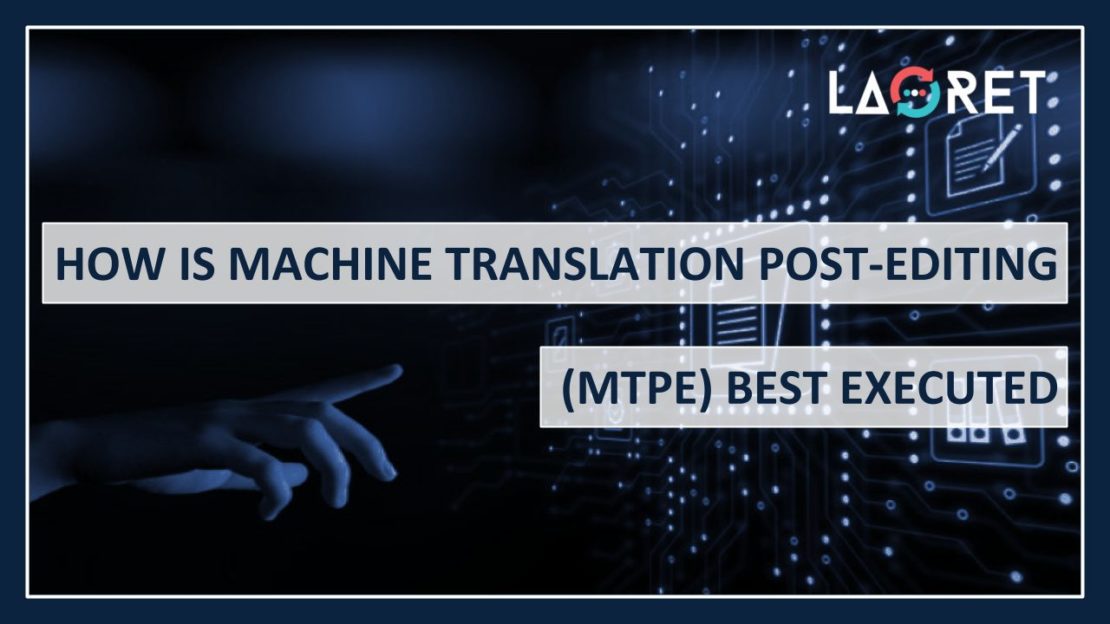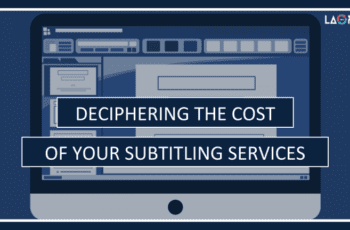How Is Machine Translation Post-Editing (MTPE) Best Executed?
Machine Translation Post Editing: To apply or not to apply? That has often been the question. Machine Translations and whether it would actually add value to the output or if perhaps the role of the human translator is devalued, has caused some reluctance into adapting MTPE as a Translation Solution. And while the debate of which technologies to implement or not is an old one, we feel like they are often steering the conversation in the wrong direction.
The debate shouldn’t be about whether to implement MTPE or not, but how to best apply it.
Can MTPE add value to your business? Yes. But you need to know how to execute it effectively and take command in every step of the process. A poorly executed workflow and untrained translators can severely undermine what could be a useful partner in your translation and localization projects.
Let us expand on how to best implement Machine Translation Post Editing and which steps you should make sure to check off the list!
Pre-Production: How To Prepare To Receive The Best Post-Edited Machine Translation (PEMT) Quality
Machine Translation is constantly improving and evolving, but it is still fair to say that relying solely on raw machine translation is risky regardless of the quality outcome of the MT engine. and therefore human editing is highly recommended. Here are ways in which you can vastly improve the output quality, TAT (turnaround time) and cost-effectiveness.
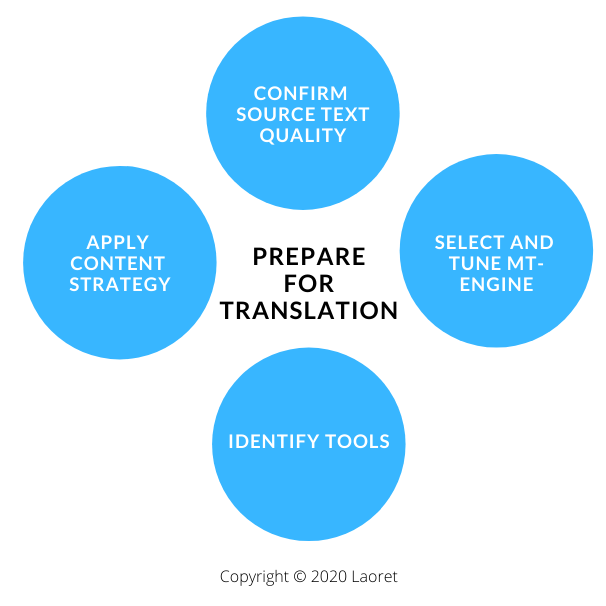
- Ensure that the source text is as free of spelling errors as possible and ambiguities are kept to a minimum, so that your translation won’t be awkward due to a vague context of the content.
- Choose the right MT-Engine for your target language and tune the engine appropriately. When it comes to MT-Engines, one size definitely does not fit all. The quality of your translation will depend on which MT-Engine you use since different engines are more suitable for certain language pairs. Some engines include Yandex MT, Baidu Translate, DeepL, GTCOM, Amazon Translate, Systran and ProMT.
- Be selective with which content to use in the MTPE Process. Not all types of content will benefit from Machine Translation. When in doubt, run a content sample through a testing environment.
- MT-Engines can be integrated with a vast selection of CAT-Tools and it’s highly recommended to use a CAT-Tool that has been optimized for the Post-Editing Process. CAT-Tools facilitate the translation and editing process with features such as the Translation Memory (TM), glossaries. Also maximize the use of a Query Management Method so that communications between you and your translators run smoothly.
Production: Machine Translation Post Editing In Its Ideal Form
Pilot your translation and run some samples to determine the productivity output rate. Use relatively large samples (approx. 5,000 words) to run through the testing environment to get more accurate readings, and adjust the metrics as you go, securing the best chance for a quality output. After the piloting, you are ready to run your MTPE Projects after confirming the human-edited sample quality, utilizing the Translation Memory (TM) and glossaries. Lastly, select translators not only based on their experience and subject matter knowledge, but also on the training they have received in Post-Editing.
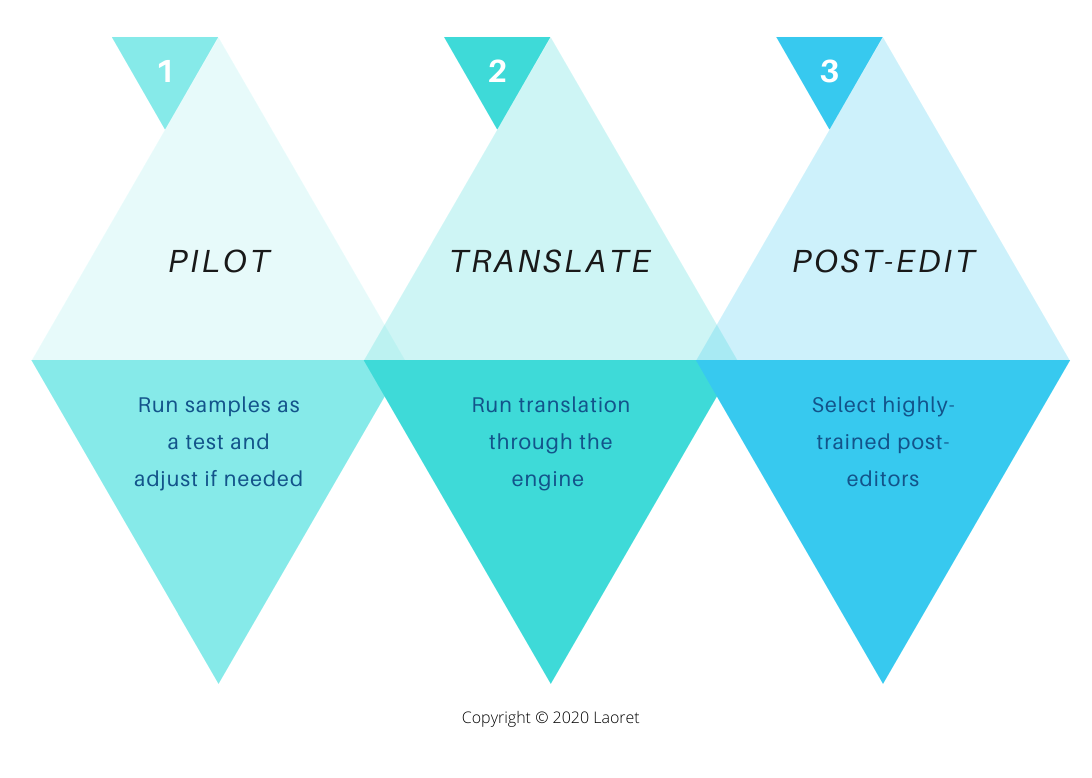
Post-Production: Metrics, Testing And Fine-Tuning
In the final stage, you measure the quality by making use of multiple reviewers (Human Evaluation) and determine the productivity of your translation. In this, see that you employ regular Post-Editing Productivity Tests (measure initial MT-output, post-editing effort, and final quality) to help you build a testing analysis for future projects and understand your ROI per language pair and even specific content type. When calculating the productivity rate, focus on more than just the daily word count. Instead, see whether the productivity can be improved across the entire lifespan of your translation projects without the quality taking a hit.
We’d like to stress that Machine Translation Post Editing is a process. You won’t get the perfect result after running your first translation. As you build up your project load, you will continue tuning and training the engine while your TM and glossary will also gain in volume. This maintenance process completes a cycle where the tuning will flow right back with the pre-production phase where you will be scoping and prepping your next project, ensuring better results, and increased productivity as you move forward.
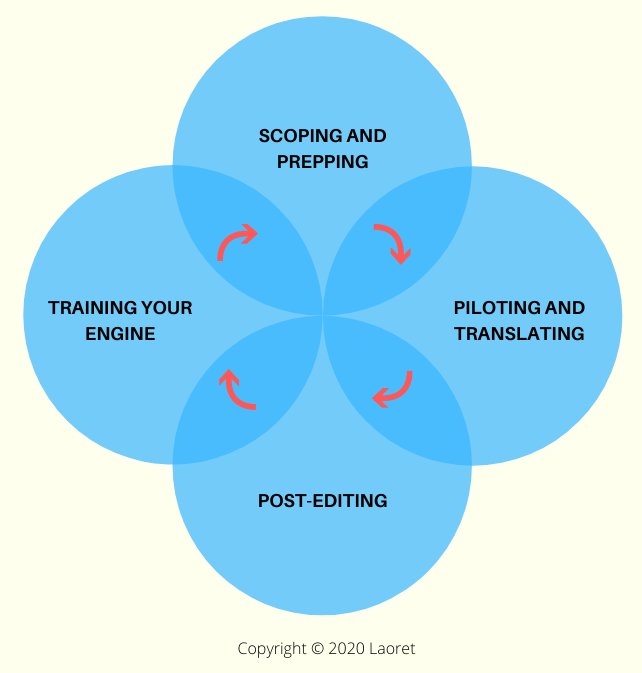
Conclusion
MTPE has a long list of pros when skillfully applied. It allows you to implement more languages across a wide variety of channels and cater to a more expansive user base. Through the tuning and training of the engine and the TM, you’ll be able to leverage a broader set of data, which reduces costs and TAT.
At Laoret, we are fully equipped to deliver top quality MTPE Solutions through our technological authority and translators highly-trained in the Post-Editing Process. If you wish to apply your own MTPE Solutions but are struggling to find translators who are up to the task, check in with us! We offer consultation and training solutions on every level and also possess a highly experienced team of native linguists you can leverage if you would like to add a professional level of Human Quality Assurance after your Post-Editing Process.

